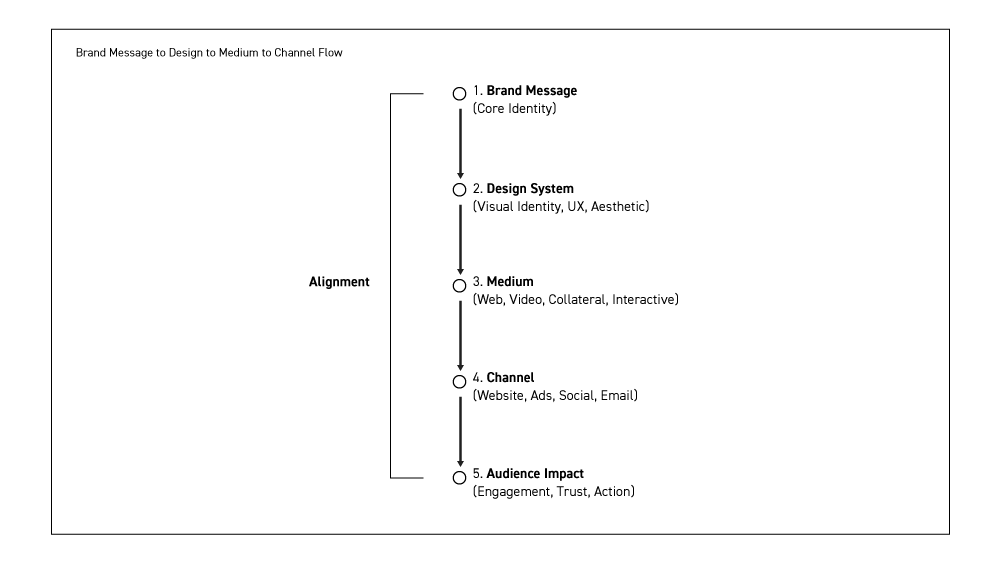You click. You scroll. You absorb. But what sticks?
A brand’s story isn’t told in a tagline. It’s not in a press release. It’s in the way it moves, the way it breathes, the way it reacts to you. The web. The video. The social hit. The thing that makes you pause. The thing that makes you stay or click.
Great design doesn’t just look good. It pulls you in. It’s the subtle difference between remembering and forgetting. It’s the gut feeling that says, this brand gets me.
AI is Changing Engagement. Now, Let’s Talk Design.
Last time, we broke down AI’s impact on engagement—how it’s shifting marketing, shaping automation, and rewriting the rules for cybersecurity brands in 2025.
Now, let’s go deeper. Because engagement is only half the battle.
The right message is nothing without the right design, medium, and execution. A brand story isn’t just told—it’s experienced. Web, motion, interactive content—each plays a role, and each can either pull people in or push them away.
Let’s break it down. What works? What doesn’t? And how do you make your brand impossible to ignore?
Choosing the Right Medium for Your Message
A brand story isn’t just something you tell, it’s something you show. The way you present it across different channels shapes how people experience and remember it.
- Web: Your website is often the first interaction someone has with your brand. If it’s slow, cluttered, or confusing, you risk losing them before they even start.
- Video: Motion makes stories more engaging and memorable. A well-crafted video can explain, inspire, and connect in ways that static content can’t.
- Social: Short, visual content makes an impact. Every post should communicate something meaningful, even in a quick scroll.
- Advertising: With limited attention spans, your ad needs the right message, timing, and visuals to stand out and drive action, memory, and emotion.
- Collateral: White papers, brochures, data sheets—tangible brand assets that reinforce credibility and provide in-depth insights. Well-designed collateral ensures that the brand’s voice is consistent, whether it’s in a sales pitch, an event handout, or a downloadable guide.
- AI & Personalization: The ability to tailor content to different audiences is more powerful than ever. AI-driven experiences can adapt in real-time to keep messaging relevant.
Each of these channels plays a role in shaping perception. Each channel is a chapter in the story. Each interaction can either build trust or break it. A good brand knows when to whisper and when to shout.
No matter the platform—web, video, social, advertising—design is the constant that ties it all together.
Design as the Foundation of Every Medium
No matter the platform—web, video, social, advertising—design is the constant that ties it all together. It’s not just about aesthetics; it’s about how information is structured, how emotions are conveyed, and how a brand’s identity remains recognizable across all of these touchpoints.
Good design helps guide the experience. It dictates whether a website feels intuitive or frustrating, whether a video is captivating or forgettable, whether an ad is compelling or easy to scroll past. When used effectively, design doesn’t just enhance a brand’s message, it amplifies it, clarifies it, and makes it stick.
But beneath all of this: beneath the colors, the typography, the animations; there’s something deeper: the brand’s mission, vision, and core message. Design is the vehicle, but the message is the destination. Without a clear brand foundation, even the best designs can fall flat.

That’s why the most impactful brands get this right from the start. They align their visual identity with their purpose, ensuring that every interaction—whether it’s a website visit, a social post, or a product demo—reinforces who they are, what they stand for, and why they matter.
The best brands aren’t just visually stunning—they’re cohesive, intentional, and unmistakably clear in their message. And in an age of AI-driven content creation, where execution is becoming faster and easier, the real differentiator is knowing what you want to say—and making sure your design supports it.



